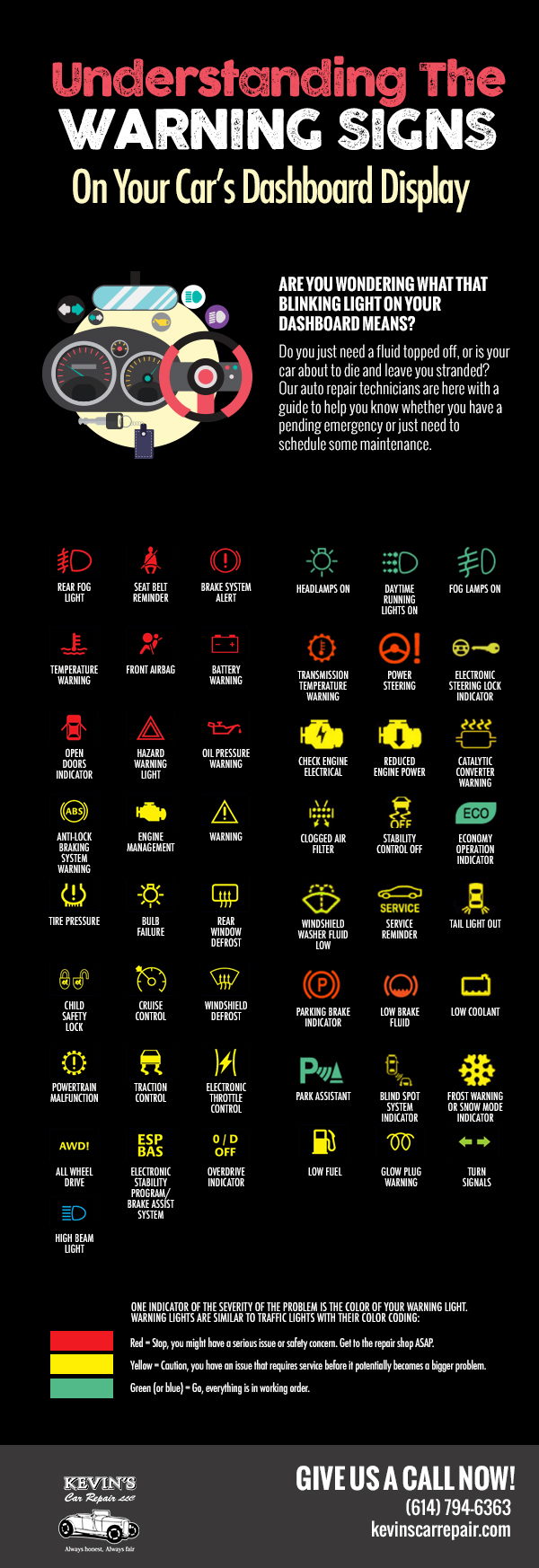Wondering Regarding The Definition Behind Those Control Panel Caution Lights? Gain Insights Into Their Effects For Your Vehicle'S Safety And Security And Maintenance
Wondering Regarding The Definition Behind Those Control Panel Caution Lights? Gain Insights Into Their Effects For Your Vehicle'S Safety And Security And Maintenance
Blog Article
Staff Author-Boye Dalgaard
When you're behind the wheel, those radiant caution lights on your dashboard can be a bit complicated. Do you know what they're trying to inform you concerning your auto's health? Understanding the importance of these lights is essential for your safety and security and the long life of your car. So, the following time among those lights turns up, would not you want to decipher its message precisely and take the essential actions to address it?
Common Caution Lights and Interpretations
Recognize usual caution lights in your vehicle and comprehend their meanings to guarantee safe driving.
One of the most normal caution lights consist of the check engine light, which signifies problems with the engine or discharges system. If this light comes on, it's vital to have your car inspected promptly.
The oil stress alerting light suggests reduced oil stress, requiring prompt attention to stop engine damage.
A blinking battery light could recommend a defective billing system, possibly leaving you stranded if not attended to.
The tire pressure monitoring system (TPMS) light alerts you to reduced tire pressure, affecting vehicle stability and fuel efficiency. Overlooking cheap interior car cleaning near me can lead to unsafe driving conditions.
The abdominal muscle light suggests an issue with the anti-lock braking system, jeopardizing your ability to stop promptly in emergencies.
https://www.ratchetandwrench.com/articles/2846-eight-tips-for-a-perfect-auto-repair-photo-shoot but not least, the coolant temperature warning light warns of engine overheating, which can result in serious damage if not settled swiftly.
Understanding these common caution lights will help you attend to concerns promptly and maintain safe driving problems.
Relevance of Prompt Focus
Recognizing the typical caution lights in your car is only the initial step; the significance of promptly resolving these cautions can't be stressed enough to guarantee your safety when traveling.
When a warning light brightens on your dashboard, it's your automobile's means of interacting a possible concern that requires attention. Ignoring these cautions can cause extra extreme problems later on, compromising your safety and security and potentially costing you much more in repairs.
Trigger focus to cautioning lights can protect against failures and mishaps. For instance, a blinking check engine light can show a misfire that, if left unattended, might create damage to the catalytic converter. Addressing this immediately can save you from a pricey repair.
In a similar way, a brake system alerting light might signify low brake liquid or used brake pads, essential parts for your security when driving.
Do It Yourself Troubleshooting Tips
If you notice a caution light on your control panel, there are a few DIY troubleshooting tips you can try before looking for specialist assistance.
The initial step is to consult your vehicle's guidebook to recognize what the specific caution light indicates. Occasionally the problem can be as straightforward as a loosened gas cap triggering the check engine light. Tightening up the gas cap may solve the problem.
An additional common problem is a reduced battery, which can set off different cautioning lights. Checking the battery connections for corrosion and guaranteeing they're safe may repair the problem.
If a warning light persists, you can try resetting it by detaching the cars and truck's battery for a few minutes and then reconnecting it. Additionally, checking your car's liquid levels, such as oil, coolant, and brake liquid, can aid fix cautioning lights related to these systems.
Conclusion
Finally, comprehending your auto's warning lights is necessary for maintaining your lorry running smoothly and securely. By immediately resolving these notifies and understanding what they indicate, you can avoid costly fixings and prospective breakdowns.
Bear in mind to consult your auto's handbook for certain details on each warning light and take action accordingly to make certain a trouble-free driving experience.
Keep informed, stay safe on the road!
